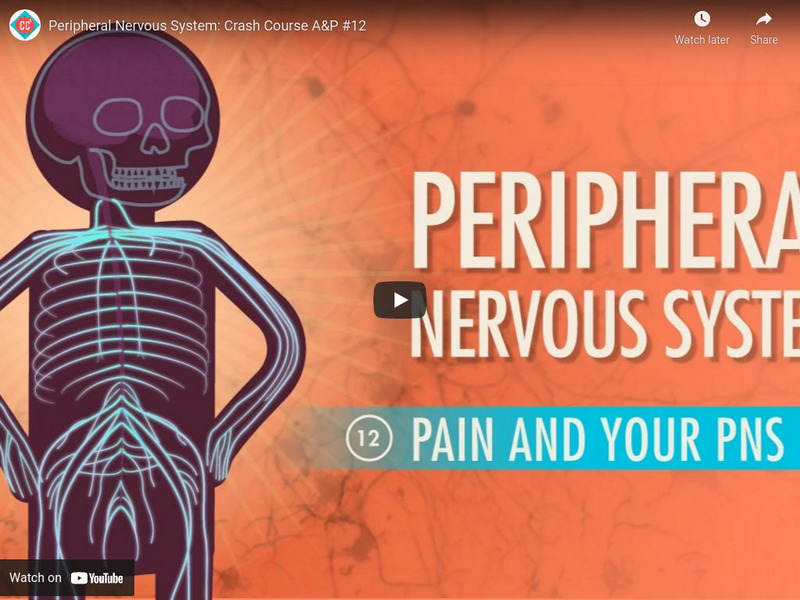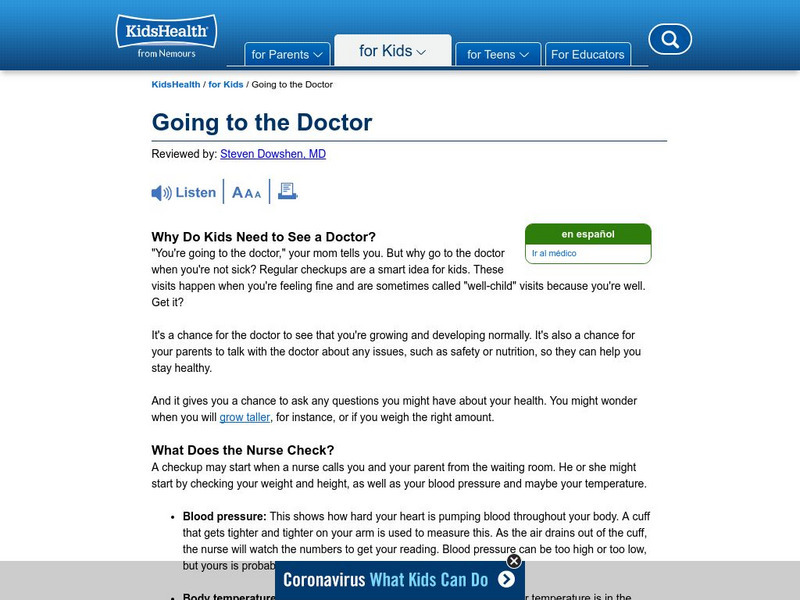Hi, what do you want to do?
Catalyst University
RPAs EXPLAINED [Part 2a] | Vestibulospinal Reflex (VSR) & Vestibulocollic Reflex (VCR)
In this video, we explore the structure and functions of the vestibulospinal and vestibulocollic reflexes, or the VSR and the VCR. This will lead to discussing the hip and step strategies.
Curated Video
Understanding Reflex Arcs in the Nervous System
The video is a lesson on reflex arcs and the function of reflex actions in the nervous system. Using a hot pan as an example, the video describes how pain receptors in the skin detect a stimulus, which triggers a series of neuronal...
Mazz Media
Animal Behavior
In this information-packed program students will learn about the behavior patterns of all types of animals including mammals, birds, insects and more. From food gathering to mating, survival instincts and sleeping habits to social...
Catalyst University
Primitive Reflexes Through 1st Year of Life [per NPTE]
In this video, we explore primitive reflexes in the first year of life that are covered on the NPTE along with their purpose, time of onset, and time of integration.
Curated Video
The Brain and Motor Control: Understanding How We Move
In this video, we explore the fascinating control center of our bodies - the brain. We learn about reflexes, motor systems, and the various motor areas in the brain that allow for precise voluntary control. Additionally, we discover the...
Curated Video
Pressure Reflexes and Mean Arterial Pressure
What happens when Mean Arterial Pressure goes to high? Baroreceptors fire, signal goes to the medulla, parasympathetic activity goes up, Sympathetic Activity goes down, which ends up resulting in an increase in Mean Arterial Pressure....
Curated Video
023 How Reflexes Work (Knee jerk and eye blink)
In this video, my wife helps me to demonstrate how reflexes work at the level of the neurons. We look at both the Knee jerk and eye blink reflexes and the mechanism underlying both.
Curated Video
How the Nervous System ACTUALLY Works (EASY!)
The nervous system is the control center of the body. But how does it actually work? In this video, we discuss what the nervous system does, the divisions of the nervous system, and how certain functions (like vision and reflexes) work.
Professor Dave Explains
The Sensorimotor System and Human Reflexes
We just learned all about how sensory information from the surroundings makes it to the brain, but once it's there, the brain has to then tell the body what to do to respond to its surroundings. This happens thanks to the sensorimotor...
Curated Video
Why Do Animals Have Whiskers?
Explore the fascinating function of whiskers in animals. We will learn how whiskers aid vision, serving as touch receptors, and providing a heightened sense of feeling. The whiskers play a crucial role in helping animals navigate their...
Curated Video
The Importance of Reflexes
This video explains what reflexes are and how they are involuntary actions of the body in response to stimuli. It highlights various reflexes such as removing the hand from a hot object, blinking, sneezing, coughing, and the patellar...
Getty Images
Neuromuscular junctions between nerve cells (motor neurons) and a muscle. Nerve signals (green) are transmitted from the nerves to the muscle tissue by the neurotransmitter chemical acetylcholine. This signal causes the muscle to contract
Neuromuscular junctions between nerve cells (motor neurons) and a muscle. Nerve signals (green) are transmitted from the nerves to the muscle tissue by the neurotransmitter chemical acetylcholine. This signal causes the muscle to contract
AFP News Agency
CLEAN : UN envoy urges deescalation in Ukraine
CLEAN : UN envoy urges deescalation in Ukraine
Crash Course
Peripheral Nervous System
The brain does not feel pain, which is why surgeons can perform brain surgery without anesthesia or while the patient is awake. Pupils see how the peripheral nervous system allows humans to feel pain. The narrator explores the afferent...
Crash Course
The Nervous System
What do you call a brain without one billion neurons? A no-brainer! The narrator of a video about the brain and the differences between the central and peripheral nervous systems walks viewers through both systems, explaining how they...
Crash Course
Crash Course A&p #12: Peripheral Nervous System
It is now time to meet the system that helps your crazy brain stay in touch with the outside world. We follow up last week's tour of the central nervous system with a look at your peripheral nervous system, its afferent and efferent...
Curated OER
Kids Health: Going to the Doctor
This article tells what it is like to have a check-up at the doctor's office. Knowing what to expect takes away your fear and worry.
Khan Academy
Khan Academy: Adaptive Value of Behavioral Traits
Observable behavior can be broken down into three psychological categories: innate behavior, learned behavior, and complex behavior. This video offers an in-depth explanation of each category with examples. [12:50]





![RPAs EXPLAINED [Part 2a] | Vestibulospinal Reflex (VSR) & Vestibulocollic Reflex (VCR) Instructional Video RPAs EXPLAINED [Part 2a] | Vestibulospinal Reflex (VSR) & Vestibulocollic Reflex (VCR) Instructional Video](https://static.lp.lexp.cloud/images/attachment_defaults/resource/large/missing.png)




